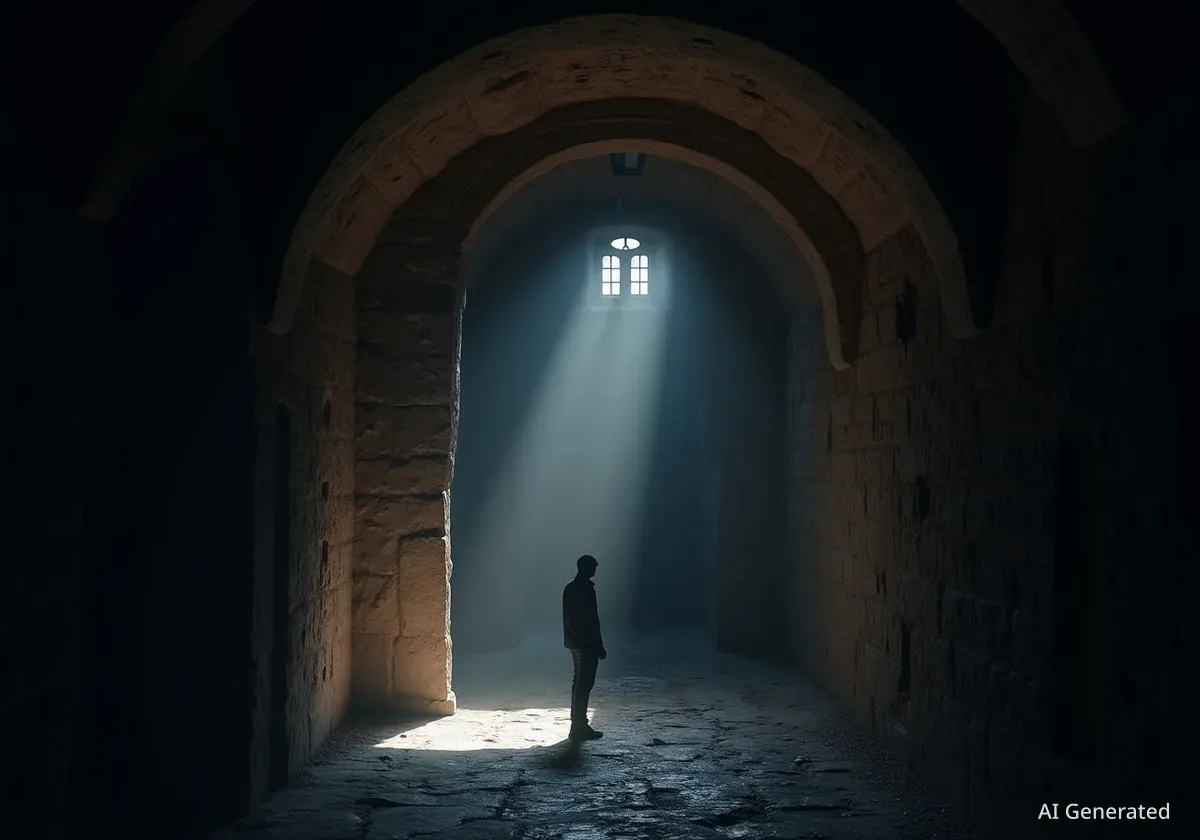A previously hidden imperial passage within Rome's Colosseum has opened to the public, allowing visitors to experience a path once used exclusively by emperors. This new access point offers a unique perspective on ancient Roman life and the grand spectacles held within the arena.
Key Takeaways
- A secret imperial passage in the Colosseum is now open to visitors.
- The 180-foot tunnel was used by emperors to reach their private box.
- Stucco artwork inside depicts gladiators, animal fights, and myths.
- The passage is named after Emperor Commodus, a figure featured in the film "Gladiator."
- This opening provides a new historical and cultural experience for tourists.
A Glimpse into Imperial Access
Starting this month, tourists can walk through the Commodus Passage, a 180-foot underground tunnel. This passage was historically reserved for Roman royalty. It provided emperors with a private, unseen route directly to their imperial box overlooking the arena.
The tunnel's opening follows a restoration effort. Visitors can now gain insight into how emperors arrived at the Colosseum. They can imagine the journey taken by figures like Commodus before they watched the games.
Interesting Fact
The Colosseum, also known as the Flavian Amphitheatre, was completed in 80 AD. It could hold between 50,000 and 80,000 spectators for gladiatorial contests and public spectacles.
Artwork and Historical Context
Inside the Commodus Passage, visitors can observe preserved stucco artwork. These etchings show scenes of ancient Roman entertainment. They include depictions of gladiators, bear fights, and acrobats performing in the arena.
The artwork also features moments from Roman mythology. One notable scene illustrates Bacchus, the god of wine, and the Cretan Princess Ariadne. These visual elements offered emperors a preview of the spectacles awaiting them.
"To walk through this passage is to step directly into the history of imperial Rome. It offers a tangible connection to the lives of emperors and the grandeur of the Colosseum's events," said a spokesperson for the Colosseum's management.
The Emperor Commodus Connection
The passage received its name in the 1810s after Emperor Commodus. He was the son of Marcus Aurelius. Historical accounts link him to this tunnel. Some suggest he survived an assassination attempt there.
Commodus is known for his brutal and often erratic rule. He executed senators and saw himself as a reincarnation of Hercules. He even participated in arena events, dressing as a gladiator and killing lions. He renamed Rome the 'Colony of Commodus' during his reign.
Historical Background on Commodus
Emperor Commodus ruled from 177 to 192 CE. He is often remembered for his cruelty and vanity. His reign marked the end of the Pax Romana, a period of relative peace and stability in the Roman Empire. His portrayal by Joaquin Phoenix in the film "Gladiator" brought his story to a wider modern audience.
The End of Commodus's Reign
Despite surviving earlier attempts, Commodus was eventually assassinated in 192 CE. His advisors arranged for a champion wrestler named Narcissus to strangle him to death in his bath. This event ended his tumultuous rule.
The opening of the Commodus Passage offers more than just a walk through history. It provides a deeper understanding of the political intrigue and personal lives of Roman emperors. It highlights the unique ways they engaged with the public spectacles.
Visitor Experience and Significance
The new access point enhances the overall visitor experience at the Colosseum. It adds another layer to understanding the ancient monument. Tourists can now explore areas previously unseen by the general public.
This initiative helps to preserve Roman heritage. It also makes it more accessible to a global audience. The Colosseum remains a key historical site. New discoveries and openings continue to reveal its past.
- The Colosseum attracts millions of visitors annually.
- New sections enhance educational tours.
- Restoration projects help protect ancient structures.
According to recent tourism data, cultural heritage sites like the Colosseum are a major draw for international travelers. Providing access to previously closed sections can further boost visitor numbers and interest in Roman history.
The careful restoration of the Commodus Passage ensures its long-term preservation. It also allows future generations to learn about this significant part of ancient Rome. This effort reflects ongoing dedication to archaeological research and public engagement.





